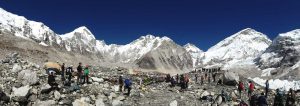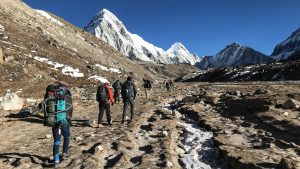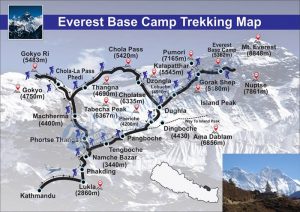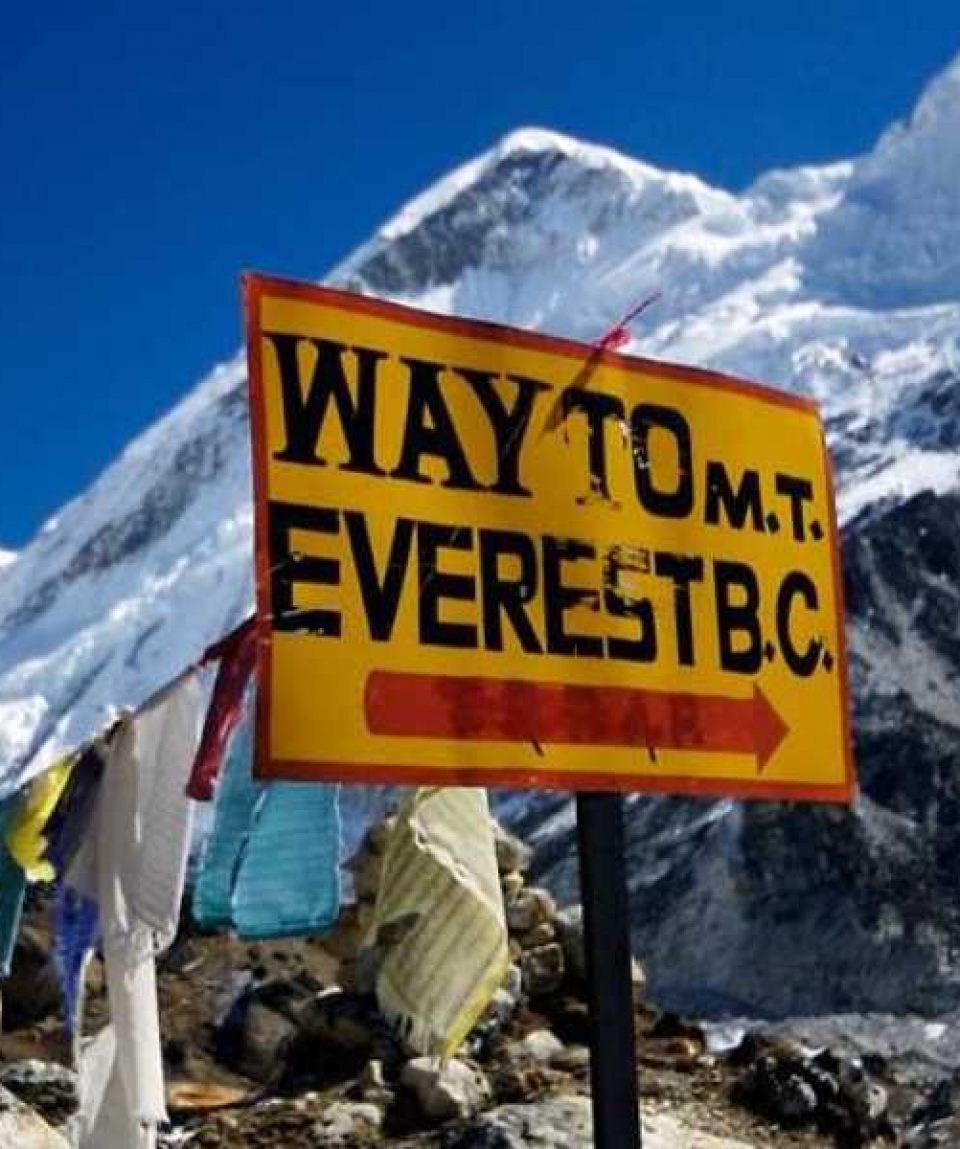Everest Base Camp Trek
Everest Base Camp perched on the Khumbu Glacier at the foot of Everest is at an altitude of 5600 meters which is reached over a period of nine days with two complete rest days enroute. In terms of acclimatization profile, it is very feasible as long as you don’t go too fast.
Visit the Buddhist Tengboche monastery for the Mani Rimdu festival in November. Explore the Gokyo valley with its sacred lakes and stupendous views of four 8000m peaks. Or a circuit of the region crossing the high passes or Cho La and Renjo La.

-
Reviews 0 Reviews0/5
-
Vacation Style Holiday Type
-
Activity Level Moderate
-
Everest base camps refers generally to two base camps on opposite sides of Mount Everest: South Base Camp is in Nepal at an altitude of 5,364 metres, while North Base Camp is in Tibet at 5,150 meters.

Everest Base Camp is high on the bucket list for many trekkers. It’s easy to see why. The trail weaves along the foot of many Himalayan giants and the views of Mt Everest and many other seven and eight thousand-meter peaks are just unforgettable. After Namche Bazar the trail ascends above the tree line and you quite quickly find yourself walking in a stunning high-altitude landscape. The walk to Everest Base Camp (5364 m) from Gorakhshep takes you through the Khumbu Glacier an exciting moment for all. From Everest Base Camp you have a close view of the Khumbu Ice Fall, only one of the big challenges the Everest expeditions face on the bid to the summit. Well-equipped lodges are nestled around the region and run by the friendly Sherpa people. This trek reaches high altitudes quite quickly so it is important to take the suggested acclimatization days and to be aware of signs of altitude sickness.

KEY FACTS
| Altitude | 5550m |
| Starting Point | Lukla |
| Ending Point | Lukla |
| Distance | 90km |
| Age Requirement | 10+ Years |
| Accommodation | Camping, Teahouse, Lodge |
| Seasons | March, April, May, August, September, October, November |
| Permit Needed | TIMS, Entrance Sagarmatha National Park |
1. Stand face-to-face with Mt. Everest and experience Everest Base Camp itself
2. Scenic mountain flight from Kathmandu to Lukla with great view of Himalayan range
3. Discover the majestic Khumbu Valley
4. Stay in Sherpa homes and lodges
5. Climb Kala Patar with dramatic views of Everest
6. Accomplish a true bucket list item: trek to base camp at Mount Everest
7. See stunning Himalaya views, including Khumbu Ice Fall, Makalu and more
8. Follow local guides with years of experience on a fully-supported trek
9. Explore UNESCO World Heritage sites and learn Buddhist and Hindu traditions
There are two main seasons for trekking to Everest Base Camp being pre and post monsoon, which is March – May and Oct – Nov. It’s also possible to go outside of these months but they would be the most popular times due to weather. From March to May it starts cold and gets warmer and the opposite is true post monsoon.
The Everest Base Camp Trek requires no technical expertise or mountaineering skills as it is basically a long hike at altitude. Generally, the most off-putting aspect of the trek is its duration – around 12 days (14 if you include a pre and post night stay in Kathmandu).
Trekking in Everest Base Camp during this month is perfect due to the stable weather conditions. Temperature is neither too cold at the low altitude nor too hot at the high altitude. The temperature ranges from max 12°C in the daytime to the min -6°C at night.

